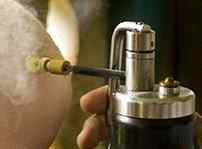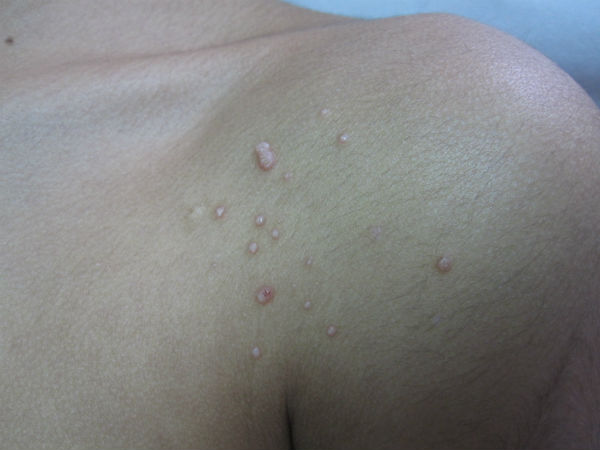Molluscum contagiosum on children’s skin is due to a virus (poxvirus). This virus has no capacity to affect to areas of the body other than the skin: its only manifestation is the small pimples you see in the image.

On the other hand, it is important to know that molluscum, by definition, heal by themselves. It is difficult to establish the time frame in which this will occur (it can be weeks or months), but at some point they will go away, for sure. This happens because the child’s immune system matures until it produces “defenses” against the virus, and “destroys” it.
Based on this point, not treating molluscum contagiosum can be a perfectly valid option. Especially in cases where the child does not show discomfort for having the pimples (some children itch and are annoyed, and in other cases the children are so calm).
Molluscum contagiosum is self-healing
In any case, they can also be treated in order to eliminate them as soon as possible. This prevents them from spreading and spreading further, although it is not 100% certain that new molluscum will not appear after treatment. There are different treatments for this.
CURETAGE:

It consists of scraping the pimples one by one, with an instrument called a curette (similar to a small spoon). It is a little uncomfortable for the child, so sometimes an anesthetic cream is applied some time before, to reduce the pain. The child is often more impressed by the bleeding than by the pain itself.
CRYOTHERAPY/LIQUID NITROGEN:
Liquid nitrogen is used to freeze the molluscum contagiosum lesions. This damages them, causing them to disappear in a few days. Like curettage, it can be uncomfortable for the child, although in this case there is no bleeding and therefore it is less shocking for the child.

In any case, cryotherapy has – in my opinion – two fundamental disadvantages. On the one hand, there is usually a small scar in the treated area, and on the other hand, during the consultation we cannot be completely sure that we have eliminated all the lesions, as they gradually resolve over the following days. It may be that some molluscum has not responded to the treatment, and it may have to be repeated at another time.
Both curettage and cryotherapy are performed in the office.
POTASSIUM HYDROXIDE/KOH (Molutrex®/Molusk®):

This treatment is done at home. It is an irritating liquid, which is applied for several days on the lesions. This causes the lesions to become inflamed and red. Thus, through the inflammatory process that caused by KOH, the pimples disappear over the following days or weeks. Treatment with KOH requires patience, as it must be applied to the lesions one by one.
After healing, the molluscum can also leave a small scar, as you can see in the picture. This will disappear with time (months).
OTHER TREATMENTS:
Apart from these treatments, which are the ones I usually use (if the decission to treat is made), there are others that are less commonly used:
- Cantharidin: this is a “vesicant” substance, i.e. it produces a small blister in the area of the molluscum. Some dermatologists apply it in the office. When the blister disappears, the molluscum also disappears.
- Imiquimod : This is a much more expensive cream approved for other skin diseases. Some studies have shown that it may have similar effectiveness to cryotherapy. But the scientific evidence for this is not entirely solid. In my opinion, too expensive for something that would heal itself without treatment…..
In summary, both observation and treatment can be good options when treating a child with molluscum contagiosum. The decision is made based on the child’s symptoms and the parents’ opinion:)
Both treating and observing can be good options
